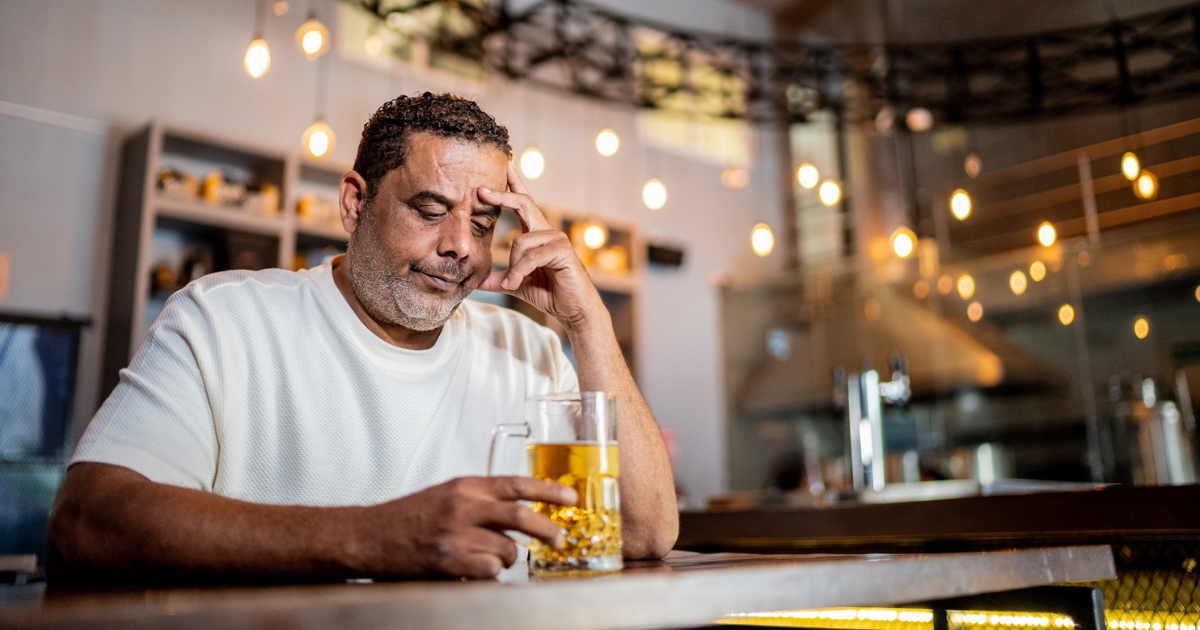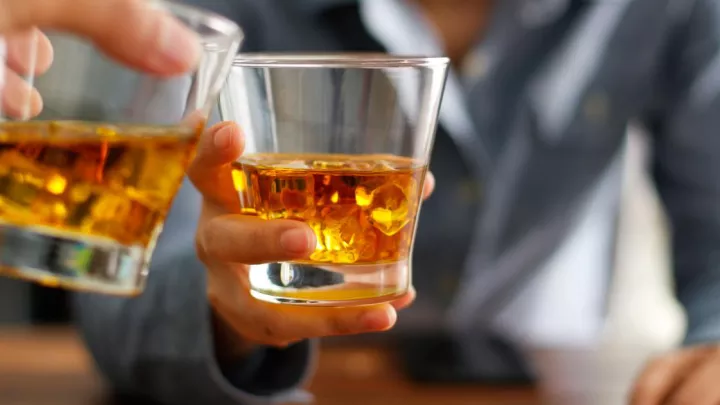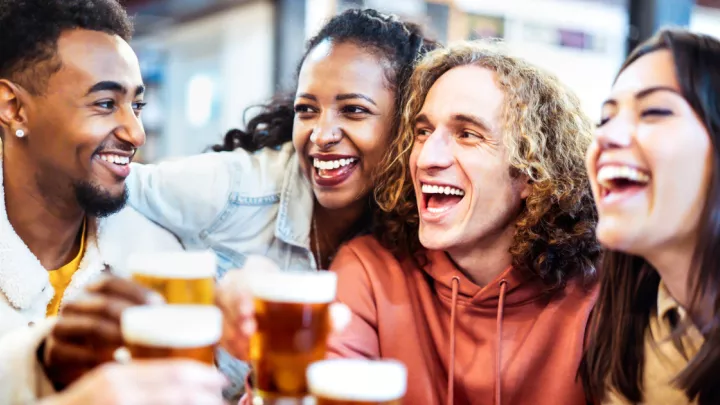Is nonalcoholic beer safe for everyone?

Over the past few years, the popularity of nonalcoholic beer and drinks has exploded. While these beverages can be a good way to reduce your alcohol intake, their efficacy, especially in the lives of those with alcohol use disorder, is complicated.
What is nonalcoholic beer and liquor?
Nonalcoholic beer is a type of beer with minimal or no alcohol. Typically, brewers use the same process as typical beer with an added step of removing the alcohol from it. Additionally, many nonalcoholic beers and liquors have additives like sugar or artificial sweeteners, caffeine or vitamin supplements.
Are nonalcoholic drinks safe for everyone?
“Overall, I think they’re good as extra options for most healthy adults,” says Anyun “May” Ma, MD. “They’re similar to other products in the market, like Diet Coke vs. regular Coke – the difference being that most have some small alcohol content.”
Even those attempting to reduce their alcohol consumption may succumb to peer pressure and feel they have to drink, especially in social scenarios. “These situations are where nonalcoholic drinks can help,” says Dr. Ma. “So, I think they’re a good choice for most healthy adults, but they’re not safe for everyone.”
According to Dr. Ma, four groups shouldn’t consume nonalcoholic beer and drinks – or should at least exercise greater caution around them. These groups include:
- Children younger than 21.
- Pregnant people.
- People with alcohol use disorder.
- Those who are susceptible to infection.
Nonalcoholic drinks for those younger than age 21
Although it may seem safe for someone younger than 21 to consume a nonalcoholic drink, Dr. Ma recommends against it. “I don’t see the point of introducing nonalcoholic drinks to those under 21 years old,” says Dr. Ma. “It’s just acting like an entry point or trigger or cue for them to prepare or prime them to use real alcohol at an early age.”
Addiction medicine physician Kenneth Zoucaha, MD, agrees. “There’s a misconception that, if you introduce alcohol early in a person’s life and demonstrate to kids how it can be a part of normal life, that they won’t develop alcohol use disorder,” says Dr. Zoucha.
“But the opposite is actually true, as the rates of alcohol use disorder are actually higher in Europe than they are in the U.S. It’s all related to neurobiology and brain development,” says Dr. Zoucha. “For someone who starts using alcohol under age 14, they have almost a 50% chance of developing an alcohol use disorder. If they’re under 18, this number drops to around 25%; if you wait until 21, it drops to about 10%.”
Nonalcoholic drinks for pregnant people
Anyone pregnant should treat nonalcoholic drinks as any regular alcoholic drink. “Many of these drinks contain a small amount of alcohol and, as of now, there’s no minimum amount of alcohol we can say is safe for pregnant women and their baby,” says Dr. Ma.
Nonalcoholic drinks for those with alcohol use disorder
Those with alcohol use disorder should exercise caution with nonalcoholic beverages. “If they are still using alcohol but have a goal to limit it, these drinks can help taper them off of beverages containing higher amounts of alcohol,” says Dr. Ma.
“Sometimes, we have patients who aren’t in a place where they’re ready for total abstinence,” says Dr. Zoucha. “For these folks, nonalcoholic drinks might be a good choice, so you can still hang out with your friends and family who are drinking without having the impairment from alcohol yourself.”
Nonalcoholic drinks can play a role in harm reduction and meeting patients where they’re at instead of total or immediate cessation. “Ultimately, less alcohol is good, regardless of how you’re achieving it,” says Dr. Zoucha.
However, for those who are in active recovery from alcohol use disorder, nonalcoholic drinks may not be the best choice. These drinks could trigger something known as euphoric recall.
Euphoric recall is when those in remission from a substance use disorder get access to similar triggers related to the substance they’re dealing with and remember the past with rose-colored glasses, exaggerating the positives without acknowledging the negatives.
Because euphoric recall happens subconsciously, it can lead us to do things we know are bad for our health. In the case of someone with an alcohol use disorder, the euphoric recall could trigger a return to alcohol use. “Similarly, euphoric recall can be so powerful it can make people anticipate and feel something close to what a substance makes them feel before actually using it,” says Dr. Zoucha.
“That’s why nonalcoholic drinks may be challenging to a patient’s recovery,” says Dr. Ma. “Because we always advocate for our patients who have a goal of abstinence to avoid triggers whenever possible, especially if they’re in an early stage of recovery.”
Nonalcoholic drinks for those susceptible to infection
Some studies show that there might be increased foodborne pathogens in nonalcoholic beers – especially compared to alcoholic beverages. “Alcohol is a natural disinfectant, so it kills these pathogens, but nonalcoholic drinks don’t have this power,” says Dr. Ma. “So, people susceptible to infection probably shouldn’t consume these drinks.”
Unsafe levels of drinking
For anyone interested in limiting the potential harm from alcohol consumption – through nonalcoholic drinks or otherwise – it’s critical to understand what the unsafe drinking limits are.
For women, this amount is over three drinks per occasion or more than seven per week. For men, it’s over four drinks per occasion, or more than 14 per week – until age 65, at which point it reduces to over three drinks per occasion and seven over seven per week.
Note, that a drink is one shot of liquor, five ounces of wine or 12 ounces of beer. “Anyone who exceeds these levels on a routine basis has a much greater risk of having cancer, heart disease, liver and stomach issues including cancer and dementia-related decline,” says Dr. Zoucha.
Using nonalcoholic drinks safely
Although nonalcoholic drinks can be a helpful tool for reducing or even stopping drinking, it’s not without its potential dangers. In addition to stimulating recall and triggering a recurrence, it’s essential to understand the misconception of the alcohol content in these products.
“Most nonalcoholic beverages – especially beer – do have some alcohol,” says Dr. Zoucha. A past study of nonalcoholic beers found that 29% had higher alcohol levels than the labels suggested.
“Because of these factors, for certain groups of people – like those diagnosed with alcohol use disorder – we don’t recommend using nonalcoholic drinks,” says Dr. Ma.
Still, both Dr. Ma and Dr. Zoucha reiterated they don’t want to demonize alcohol. “As long as you’re not damaging your health or putting another person’s safety in harm’s way, it’s OK to use in moderation,” says Dr. Ma.
If you enjoy an alcoholic beverage every once in a while, you can use nonalcoholic drinks to satisfy your desire to have a drink while simultaneously reducing your actual alcohol intake.







